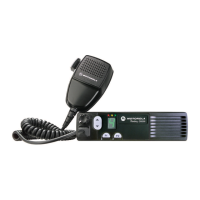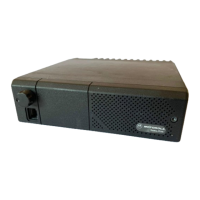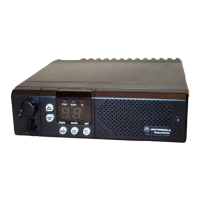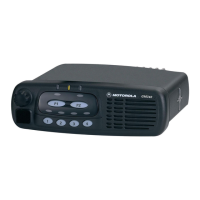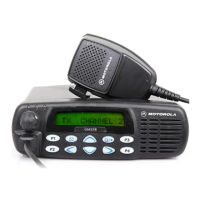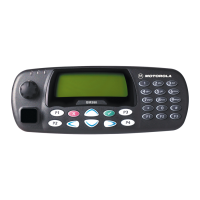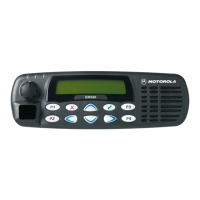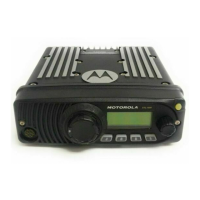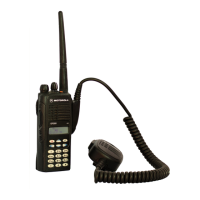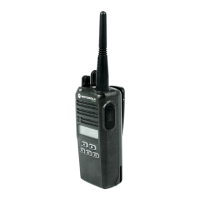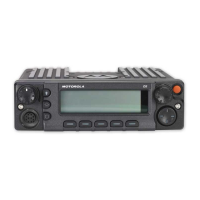VHF Transmitter Power Amplifier (146–174 MHz) 2-3
Op-amp U103-3 monitors the drain current of U101 via resistor R122 and adjusts the bias voltage of
U101.
In receive mode, the DC voltage from RX_EN line turns on Q101, which in turn switches off the
biasing voltage to U101.
3.2 Power Controlled Driver Stage
The next stage is an LDMOS device (Q105) which provides a gain of 12 dB. This device requires a
positive gate bias and a quiescent current flow for proper operation. The bias is set during transmit
mode by the drain current control op-amp U102-1, and fed to the gate of Q105 via the resistive
network.
Op-amp U102-1 monitors the drain current of Q105 via resistors R126-7 and adjusts the bias
voltage of Q105 so that the current remains constant.
In receive mode the DC voltage from RX_EN line turns on Q102, which in turn switches off the
biasing voltage to Q105.
3.3 Final Stage
The final stage is an LDMOS device (Q100) providing a gain of 12 dB. This device also requires a
positive gate bias and a quiescent current flow for proper operation. The voltage of the line PA_BIAS
is set in transmit mode by the ASFIC and fed to the gate of Q100 via the resistive network R134,
R131. This bias voltage is tuned in the factory. If the transistor is replaced, the bias voltage must be
tuned using the Tuner. Care must be taken not to damage the device by exceeding the maximum
allowed bias voltage. The device’s drain current is drawn directly from the radio’s DC supply voltage
input, B+, via L117 and L115.
A matching network consisting of C1004–5, C1008–9, C1021, C1013, C1019, L116: and two
striplines, transforms the impedance to 50 ohms and feeds the directional coupler.
3.4 Bi-Directional Coupler
The bi-directional Coupler is a microstrip printed circuit, which couples a small amount of the
forward and reverse power of the RF power from Q100.The coupled signal is rectified to an output
power which is proportional to the DC voltage rectified by diode D105; and the resulting DC voltage
is routed to the power control section to ensure that the forward power out of the radio is held to a
constant value.
3.5 Antenna Switch
The antenna switch utilizes the existing dc feed (B+) to the last stage device (Q100). The basic
operation is to have both PIN diodes (D103, D104) turned on during key-up by forward biasing
them. This is achieved by pulling down the voltage at the cathode end of D104 to around 12.4 V (0.7
V drop across each diode). The current through the diodes needs to be set around 100 mA to fully
open the transmit path through resistor R108. Q106 is a current source controlled by Q103 which is
turned on in Tx mode by TX_EN. VR102 ensures that the voltage at resistor R107 never exceeds
5.6 V.

